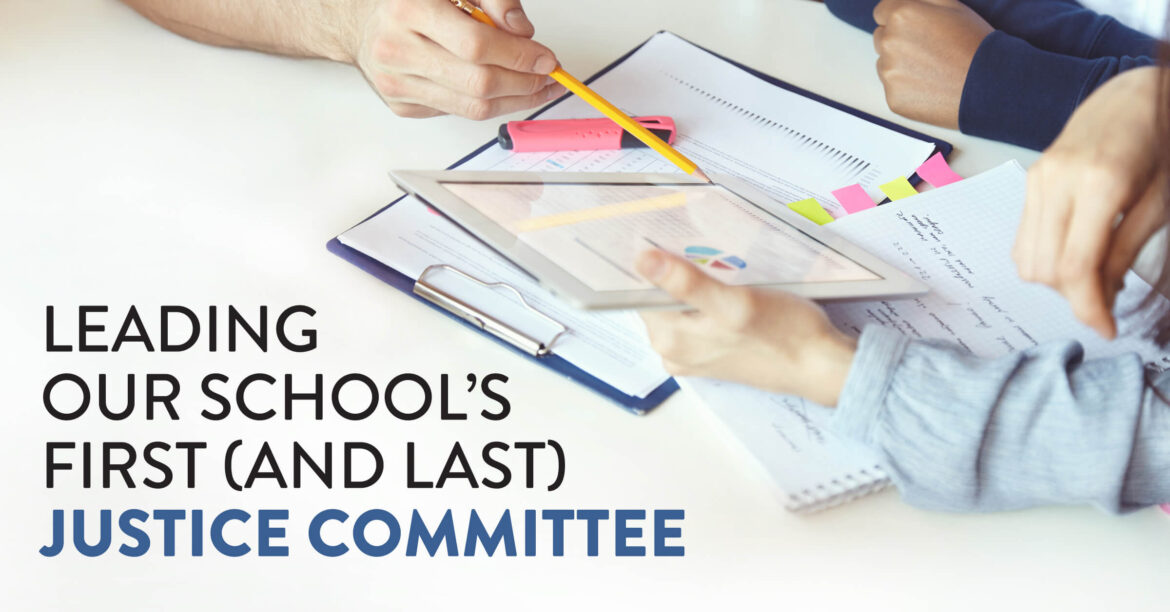By Jennifer Ladner
When I decided to return to the classroom after working in education administration for eleven years, I knew it would be a huge shift.
I’ve always been extremely passionate about helping create an education system where all children are able to achieve success in the classroom; my previous role as the school director of an early childhood facility that served a predominantly African American population had involved partnering with families to eliminate achievement and opportunity gaps.
Walking away from the strong school culture I had cultivated there through years of building relationships and trust was a very difficult decision. But the demands of the job, which required long hours every day, had begun to take a toll and I knew it was time to be more present for my children. I hoped that I would be able to continue some of my important equity work in one form or another, however, once I was back in the classroom.
The school I had begun working at was a highly rated Spanish immersion public school that served Pre-K through 5th grade. The majority of the teachers spoke Spanish, many of them as their first language. Nevertheless, I had a lot of prior experience working with a diverse population of both students and colleagues. This may have been why, in my first month on the job, my principal asked if I would like to lead the school’s new Justice, Inclusion, and Belonging (JIB) Committee. I was both surprised and delighted.
Getting Started
A JIB team works to create a school culture where staff, students, and families feel welcome, heard, and valued. It seeks to understand the needs, concerns, and challenges of a school, particularly in regard to racial equity, with the ultimate goal being to create a space where all members of the school are adopting anti-racist mindsets and actions.
Our first year, the committee only had three members, as well as an equity partner from the school district who met with us frequently. Each month we got together to talk about the beliefs we had that would guide our work, to set a goal for the year and track our progress towards it, and to discuss how we could share more of our JIB work with the rest of the staff.
We decided that our initial goal would be to understand the adult climate, culture, and well-being at our school. We already knew school climate survey data would be collected from our staff later in the year, and that we had access to data from the previous year to compare. But in order to truly achieve our goal, we also wanted to hear from our co-workers directly.
We decided to send out a survey asking staff members about their definition of equity and how it compares to our school district’s definition. Later in the year, we also led the opening of a staff meeting, where we introduced our colleagues to the Four Tendencies quiz, which looks at how people respond to expectations. These efforts all contributed to building connections and a sense of community in our school.
For me, the most meaningful part of our JIB team’s first year was the opportunity to enroll in an online equity explorer course that was offered by our school district. It was optional, but all three of us on the team decided to participate. The course dug into topics such as equity and identity, willingness to be disturbed, and implicit bias, then went even further by examining cycles of systemic racism and oppression and how to notice, name, and disrupt them. These were heavy and important lessons that I still need more time with even now.
As the JIB committee’s first year drew to a close, I felt good about being part of the team, but didn’t feel like we had yet to make any true impact within our school. However, I knew from experience that we had to start somewhere, and I looked forward to continuing our work in the fall.
Equity Audit
When school started up again, we were hyped and ready to begin our second year. We welcomed two new members to the committee and were now a team of five. All of us would be working towards one overarching goal for the committee, and we had the choice of completing an optional personal goal as well.
Our team goal was to analyze the school data that had already been collected (MAP scores, state test results, IEP statistics, demographics, gender, race, socioeconomic status, etc.) and share it securely with the rest of the staff according to our school’s protocol around sensitive information. (Confession: I own three different shirts that talk about how much I love data, so this work was really invigorating for me.) The optional personal goal was to schedule a time for our equity partner to come into our classrooms and conduct an equity audit to assess any unconscious biases we may have been holding and/or operating from.
I jumped right in and scheduled my class’s equity audit as soon as possible, eager to see the results. Some parameters that were considered in the audit included how I conducted my class, called on students, allowed students to speak, encouraged student participation, etc.
I learned that a number of strategies I was already using helped to make my classroom more equitable, such as looking for whole-class responses rather than calling on individual students, and having an open seating plan instead of assigned seats. The audit feedback also made me think more consciously about additional systems I could put in place to make sure that all of my students have the opportunity to contribute and feel included.
Data Analysis
Once again the JIB committee met monthly, working to pull the data. We also led the opening of another staff meeting. This time we utilized researcher Brené Brown’s Anatomy of Trust video and connected it back to our school’s climate and culture, a strategy that received great feedback.
As our small team looked at the data we had accumulated, one thing became clear: our students of color were scoring much lower than our white students. I was not surprised; I had been seeing this in my work for over a decade, but it was a shock to some of the committee members, and we wondered how the rest of the staff would respond. When we shared our results at the end of the year, this led to a rich discussion about what we could do to fix this discrepancy in the future.
Off the high of the data discussion (yes I did wear my “I heart data” shirt to the meeting!), we began setting goals for our third year. We felt like we had built a solid foundation and it was time to start establishing the next part, which would involve some discomfort.
For year three, we wanted to conduct two JIB training sessions with staff—one per semester. We knew these sessions would be challenging, and that they might present some hard-to-hear truths, but we also knew they would be important. We were thinking of pulling from our equity explorer course and leaning toward bias training of some sort.
Then came an unscheduled visit from our equity partner, who told us that all JIB work was being abruptly halted. She wasn’t even sure what would happen to her position. It was jarring and disheartening. She warned us about words we shouldn’t use in emails or documents, and actually recommended deleting such items altogether.
Our team met two more times to process what was happening and decide what we wanted to do. We reluctantly agreed to abandon our work for the time being. We had all lost our spark and didn’t want to risk losing our teaching licenses.
Where to Go from Here
I’m sure you are wondering what brought about such an abrupt end. Or maybe you feel like you already know the answer: the new United States president was elected. But I’m disappointed to say this happened even before efforts to dismantle DEI (Diversity, Equity, and Inclusion) began. Our state, which is 49th in Education, got a new superintendent who chose to stop all of the work our district had begun around equitable education.
I am sad for our school. We missed out on opportunities to grow closer to each other and connect on a deeper level by engaging in meaningful self-reflective work. I fear our students and families have lost their chance to have a more inclusive and supportive school. And more than anything, I’m heartbroken that our moment to try and decrease the opportunity gap for our students of color has slipped away.
Although we’ve put this work on hold for now, our committee does hope to officially start up again in the future. And while reflecting on the progress that we made, I’ve found a renewed drive to dig back and discreetly begin the work once more.
In the current state of our country, it may not feel like the safest time to start your own JIB team or DEI work. However, if you are like me and don’t want to give up, my suggestion to you is to start small. Begin by creating a stronger community in your school. Make a school charter, do team-building activities, and engage together in talking about the work you want to do. Take a closer look at your school’s data. What story does it tell? What stands out to you, both positively and negatively? And most importantly, what can you do about it, together as a team?



